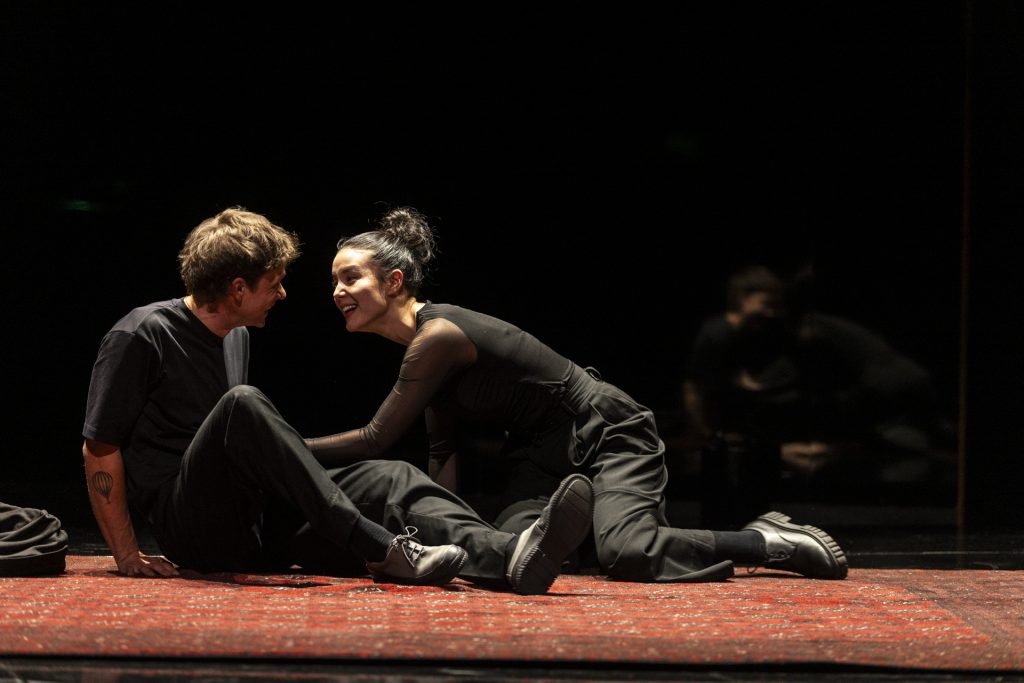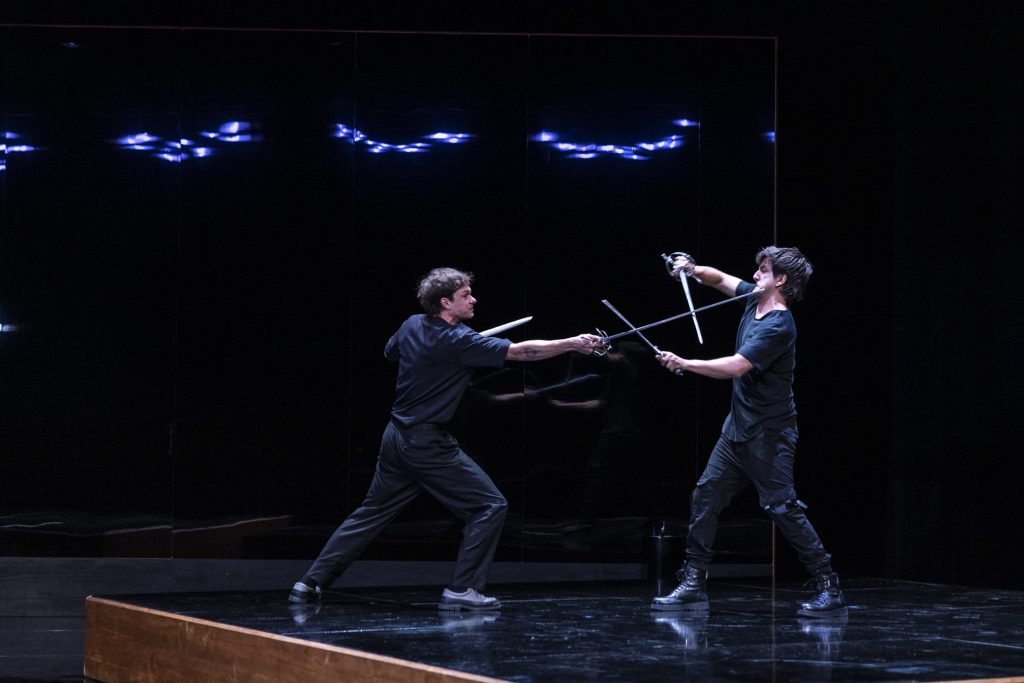I’ve been writing about Shakespeare for 15 years, so I thought I had Romeo & Juliet sussed before I even stepped into Bell Shakespeare’s rehearsal room. But then I discovered this play is way weirder and more surprising than I thought.
During my formative years, I lived in a William Shakespeare theme park. As teenagers, my mates and I spent our Friday nights sinking pints of lukewarm bitter in the As You Like It nightclub, The Pen & Parchment pub and The Encore pub, before falling into an Othello Taxi to get home.
The theme park is better known as the English town of Stratford-upon-Avon, which is where Shakespeare was born, raised, and later died. Today, the Bard is everywhere you look. There’s a statue of Shakespeare surrounded by his characters, three theatres dedicated to staging his work, historic buildings where he and his family lived, and more gift shops than you can shake a quill at.
Years later, I moved to Sydney and assumed I’d left all that behind. But when I followed the expat conga-line to Coogee, I found a maze of streets named after Shakespeare’s characters Oberon, Titania, Puck and Helena. Then I discovered NSW State Library holds the only known copy of Shakespeare’s First Folio in the entire Southern Hemisphere. And just outside the library? Yep, there’s a statue of Billy Shakespeare surrounded by his characters.
In Sydney, it dawned on me. Wherever I go in the world, Shakespeare and his pals will follow. Hamlet. Lady Mac. Lear. They’re with us all the time, etched into our daily life and the popular culture that surrounds us.

By my reckoning, the two Shakespeare characters who crop up most of all are Romeo and Juliet. They’re sprinkled everywhere like confetti in pop bangers (PinkPantheress, Taylor Swift), Hollywood hits (Baz Luhrmann, Franco Zeffirelli), a gazillion Bollywood movies, classical classics (Tchaikovsky, Berlioz), musicals (&Juliet, West Side Story), cartoons (Gnomeo & Juliet, The Simpsons), ballet and opera (Prokofiev, Bellini).
Heck, even two underwater robots exploring the Titanic were named Romeo and Juliet.
The star-crossed lovers are so ludicrously famous that I’ve always assumed I knew their story inside out and back to front. Boy meets girl – cue balcony, secret wedding, swordfights, banishment, faked death, poison, dagger, actual deaths – curtain, right?
Dead wrong. When I sat with the Romeo & Juliet cast and creative team in Bell Shakespeare’s rehearsal room, I realised how many surprises and oddities are hidden within this play. The more we looked, the more we found.

From the start, William Shakespeare is toying with his audience. He opens the play with a prologue that tells us exactly what we’re going to see: a family feud that ends when two young lovers perish. No other Shakespeare prologue gives the game away like this.
(He toys with his characters in the same way. Both Romeo and Juliet have separate premonitions of impending doom during the play. Even they seem to know what’s coming.)
After the foreboding prologue, Shakespeare does a complete 180 and serves up two riotous Acts of piss-taking, parties, flirting and smutty jokes. This is totally unlike his other tragedies, which are mostly badness, madness and sadness from the start.
In Romeo & Juliet, Shakespeare teases us (and the lovers) to a generous, sublime taste of what could have been. It’s not until the comic antihero Mercutio dies in Act 3 that the romcom fantasy transforms into a nightmare.

So, this play is more than a straight-up tragedy. And it’s certainly more than just a romantic fairytale too. Contrary to popular myth, Juliet is not a helpless damsel in distress. In fact, she’s the brains of the operation.
Juliet disobeys her parents by hooking up with Romeo and it’s her – not Romeo – who suggests they get hitched. Then, after his rash violence gets him banished from Verona, Juliet really takes matters into her own hands. She abandons her mother and nurse to cook up an escape plan with Friar Laurence. In many ways, Juliet becomes the centre of the play, directing the action around her.
I was also struck by something else in the rehearsal room. I’d previously thought that Romeo and Juliet’s parents were irretrievably awful people who loathed each other and were deeply committed to continuing their cycle of violence. That’s how they’re commonly portrayed.
But when we peered more closely at the script, Shakespeare had left tantalising little traces of compassion in the parents. Take Juliet’s father, Capulet, for example. That dude has some serious anger management issues – he often behaves appallingly. But early on, he also aspires to keep the peace. Then at the Capulet ball, when Tybalt is ready to throttle Romeo, it’s Capulet who restrains him and speaks highly of Romeo’s reputation.
When I watch the cast of Bell Shakespeare’s 2026 production on stage now, I see a feud started by a tired older generation but escalated by the younger generation. Which only adds to the heartbreak. If Juliet had confessed her love for Romeo then maybe, just maybe, her father might have seen what the Friar sees – a chance to end the feud through their marriage.
I find it staggering that there are still so many surprises to be found in this most famous of plays by this most famous of writers. It’s why I keep returning to Shakespeare’s plays and, indeed, why I love returning to his theme park. Right now, I am writing these words on the street where William Shakespeare was born. Now if you’ll excuse me, I have a lukewarm pint to drink.
Romeo & Juliet will be staged at Sydney Opera House 19 November to 7 December 2025.
